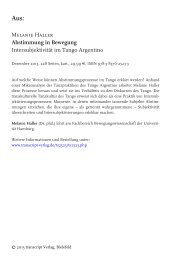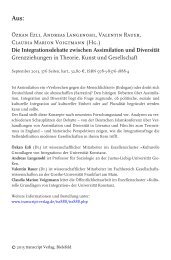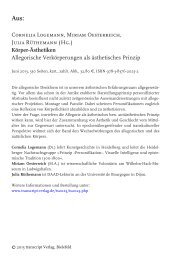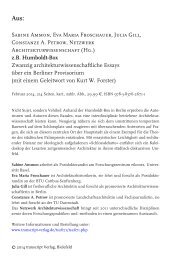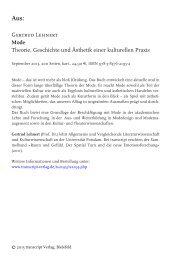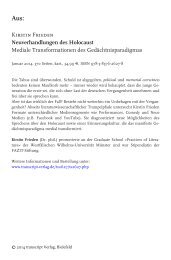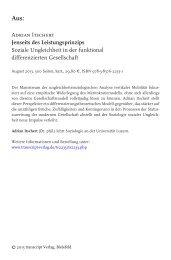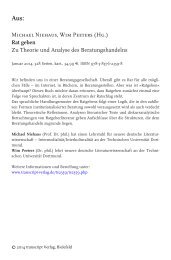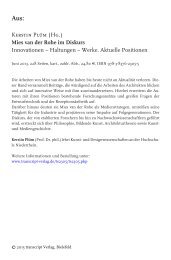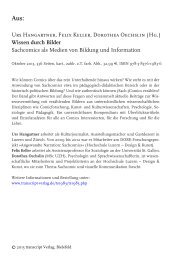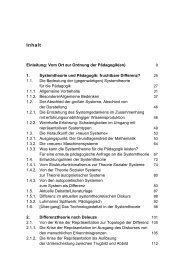Rainer Geissler, Horst Pöttker (eds.) Media ... - transcript Verlag
Rainer Geissler, Horst Pöttker (eds.) Media ... - transcript Verlag
Rainer Geissler, Horst Pöttker (eds.) Media ... - transcript Verlag
You also want an ePaper? Increase the reach of your titles
YUMPU automatically turns print PDFs into web optimized ePapers that Google loves.
<strong>Horst</strong> <strong>Pöttker</strong> | Successful Integration?<br />
120,000 migrants; by the turn of the century there were about 330,000 to<br />
340,000. Shortly before World War I, the number reached its peak of 500,000.<br />
Figures for Polish-speaking people are lower. According to Kleßmann, they<br />
amount to 127,000 in 1900, 274,000 in 1910 (Kleßmann 1978, 37, 260),<br />
whereas Murzynowska makes use of the official Prussian statistics (143,000 in<br />
1900, 304,000 in 1910), but also refers to provincial statistics (406,000 in 1910<br />
and 457,000 in 1912) (Murzynowska 1979, 30). Taking the migration<br />
movement of the years 1910 to 1914 into account, the number of people of<br />
Polish migration background in the Prussian provinces Rhineland and<br />
Westphalia amounted to between 450,000 and 550,000 right before the<br />
beginning of World War I.<br />
The regional distribution of Polish migrants in the Ruhr area was not<br />
uniform. The city of Bottrop was the center of the earliest Polish worker<br />
migration in the 1870s. Later on, the Polish population was concentrated in<br />
the regions around Dortmund, Bochum, Gelsenkirchen and Essen, whereas<br />
the proportion of Poles in the corresponding rural districts was always higher<br />
than in large cities.<br />
1890 1890 1910 1910<br />
absolute % absolute %<br />
Recklinghausen City 716 5.1 12,404 23.1<br />
Recklinghausen County 3,988 5.8 40,847 15.7<br />
Dortmund City 626 0.7 9,722 4.5<br />
Dortmund County 1,699 2.2 26,024 12.2<br />
Bochum City 1,120 2.4 6,269 4.6<br />
Bochum County 2,038 2.7 10,834 9.0<br />
Gelsenkirchen City 1,930 6.9 15,065 8.9<br />
Gelsenkirchen County 7,964 7.1 25,383 17.7<br />
Herne City 2,121 15.2 12,364 21.6<br />
Hamborn City 27 0.6 17,432 17.1<br />
Essen City 211 0.3 3,805 1.3<br />
Essen County 1,887 1.2 17,699 6.4<br />
Table 2: Polish population (except Masurians and bilinguals) in Ruhr area districts with<br />
the highest Polish population density. (Kleßmann 1978, 267)<br />
As to the social structure of the Polish minority, it is noteworthy that, in the<br />
beginning, primarily unmarried young men or miners unaccompanied by their<br />
families migrated to the Ruhr area. The rapid increase in the number of women<br />
shows that many men were soon followed by their wives and families<br />
(Kleßmann 1978, 41). By the time of World War I, the numerical proportion<br />
of men and women had almost reached the same level, the proportion of<br />
12



